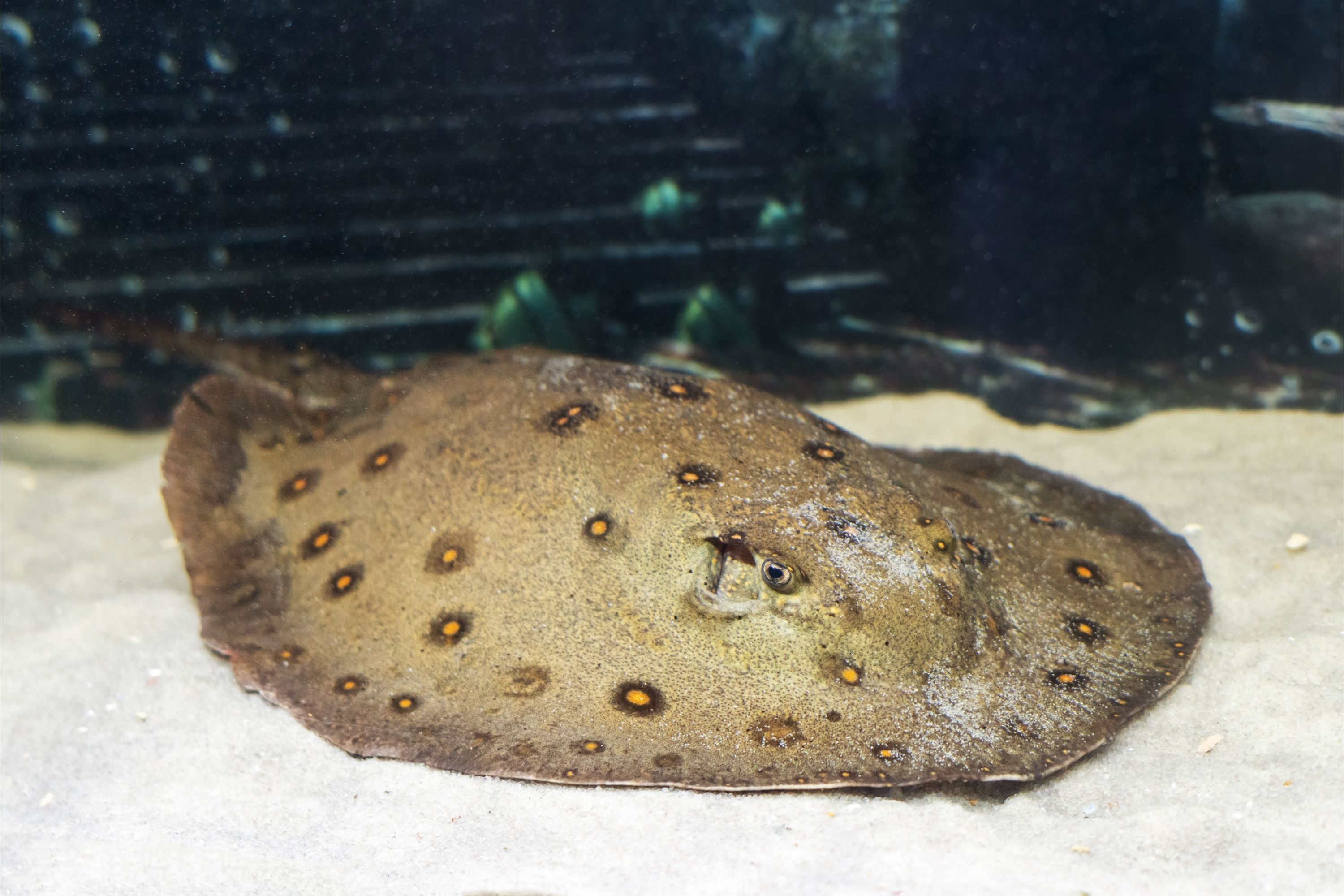Motoro stingray
(Potamotrygon motoro)

Description
The ocellate river stingray (Potamotrygon motoro), also known as the peacock-eye stingray or black river stingray, is a species of freshwater stingray in the family Potamotrygonidae. It was the first species to be described in the family and is also the most widespread, ranging throughout much of the Río de la Plata, Amazon, Mearim and Orinoco basins in tropical and subtropical South America. It is sometimes kept in aquaria. Potamotrygon motoro varies significantly in appearance and morphology over its large range, and a taxonomic review of the Amazonian populations is expected. The taxonomy of the populations in the Río de la Plata Basin was reviewed in 2013, leading to the finding that P. motoro is found virtually throughout (absent from the Paraná Basin upriver from Itaipu Dam), but also that there are two additional members of this species complex: P. amandae (widespread in Río de la Plata Basin) and P. pantanensis (northern Pantanal). Two highly distinctive Amazonian types completely lack black-edged yellow-orange spots: The so-called "Mantilla ray", CD4, in Peru and adjacent parts of Brazil, and the similar but paler CD5 from rivers near Marajó. Both CD4 and CD5 co-occur with normal variants of P. motoro. In 2019, they were described as a new species, P marquesi. Currently recognized members of the species complex found elsewhere are P. boesemani (Corantijn River; P. motoro absent), P. jabuti (mid and upper Tapajós Basin; P. motoro in the lower), and P. ocellata (lower Amazon Basin), but the last may be a synonym of P. motoro.
Taxonomic tree:







